Culdesac will be the first neighborhood-scale community with zero residential parking, which will allow for more open spaces that can be used for socializing, events, and getting to know your neighbors.
Rendering by Opticos Design.
A five-minute city, car-free and golf cart centered communities are gaining momentum around the United States, from Port Aransas, Texas, to Tempe, Arizona.
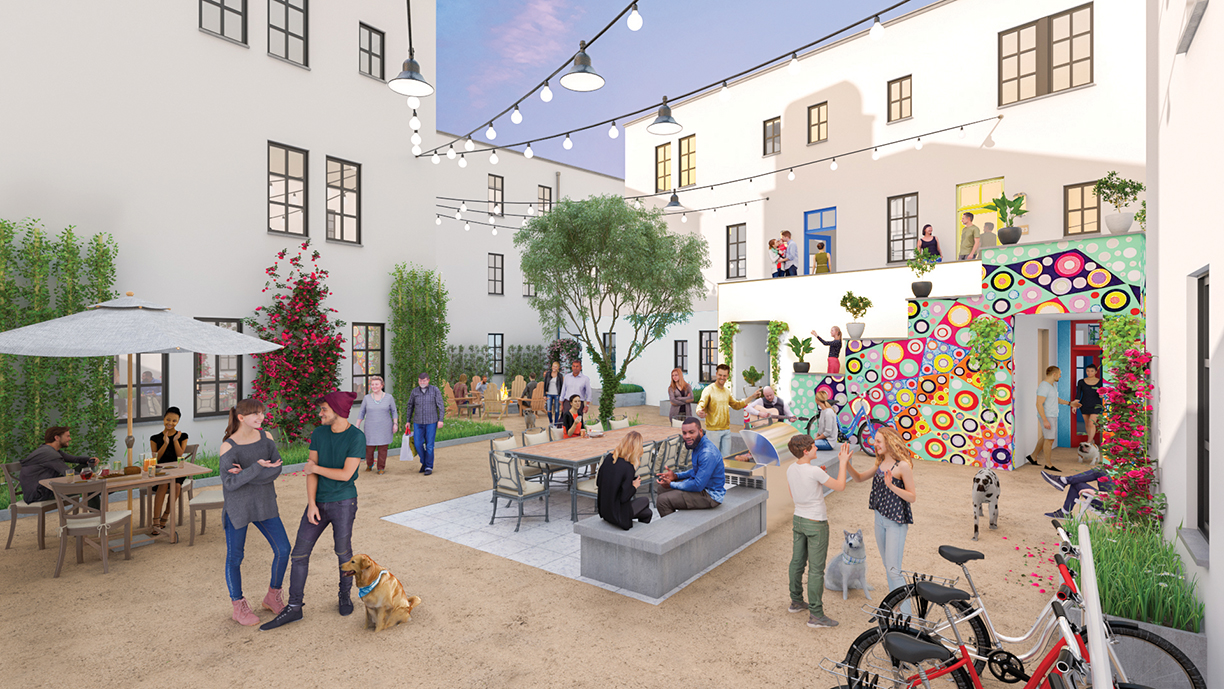
With plenty of extra outdoor space, Culdesac will hold over 150 events per year, including concerts, food trucks on the plaza, outdoor yoga classes, and more that guests can enjoy close to home.
Rendering by Opticos Design.
Automobiles have long been a symbol of freedom and advancement, making it easy to overlook the strain they put on our communities and the environment. Even smaller cities are battling noise and air pollution as the number of cars per household increases. Long commutes, congested traffic routes, parking fees, and pollution have all encouraged a whole new way of thinking when it comes to cars.
Culdesac, in Tempe, Arizona is the first car-free community in the United States that has been built from top to bottom around the idea that cities can be made better. “The vision has always remained the same — to build cities for people and not cars,” says Culdesac’s general manager, Lavanya Sunder. Space that is typically reserved for roads, parking lots, and individual parking has been completely rethought in this rental apartment community. Parking lots and garages have been replaced with wide-open spaces that offer everything from fire pits and hammocks to water features and inviting courtyards.
Tempe, Arizona, offered the ideal canvas for a project like Culdesac. “We chose Tempe for its thriving job market, proximity to transportation, and forward-thinking, action-oriented local government,” says Sunder. These are among the added benefits when considering a car-free community.
“By removing parking lots, we were able to see all of the possibilities, twice the retail, triple the open space, and 55-percent landscape coverage, compared to less than 20 percent from comparable developments,” notes Sunder.
The community was designed as a five-minute city, meaning everything residents might need is within reach and life is at your front door. “Homes at Culdesac all open up to vibrant shared courtyards, versus impersonal hallways in traditional apartment complexes,” says Sunder. Seemingly small details such as this contribute to the overall atmosphere that is created when a place urges its residents to slow down. “Community is a key component of Culdesac. Culdesac will have over 150 events per year, including concerts, food trucks on the plaza, outdoor yoga classes, and more.”
Communities such as Culdesac are finding that residents are drawn to the idea of knowing their neighbors again. A notion that hasn’t been overlooked in other communities around the United States. Port Aransas, Texas, is a beautiful beach destination that is like traveling back in time. The eclectic atmosphere is entirely accessible by golf carts, including the 18 miles of beach, with spacious boardwalks that accommodate the carts and encourage foot traffic. The use of golf carts decreases traffic, noise and pollution, and creates a very relaxed pace around the island. Cinnamon Shore, the 1,000-acre, master-planned beachfront community is very walkable and designed with families in mind who want to enjoy the small-town feel in Port Aransas.
A private luxury community, Haig Point, on the northern end of Daufuskie Island in South Carolina is only accessible by ferry, and the island is almost entirely car-free. Residents and guests never have to worry about traffic, stopping for gas, or finding a parking space, as the island runs mainly on golf carts. Similarly, Fire Island, across the Great South Bay from Long Island, New York, is another popular summer retreat that functions smoothly without cars. Bikes, golf carts, and jet skis are the best way to experience the Fire Island’s top-tier accommodations.
According to the Bureau of Transportation Statistics, “the mean number of vehicles in households is 1.9 personal vehicles…. Thus, it appears that households on average have more vehicles than drivers.” American cities, from New York to San Francisco, are struggling to provide enough space to merely park all of these vehicles, nevermind drive them.
Our personal space, green space, shared space, and even sidewalks have decreased significantly over the years as the need to accommodate a growing number of automobiles increases.
Communities such as Culdesac are hoping it is time for the urban form to be rethought and upgraded. “We also will have an “Extend Your Home On-Demand” Program,” says Sunder.
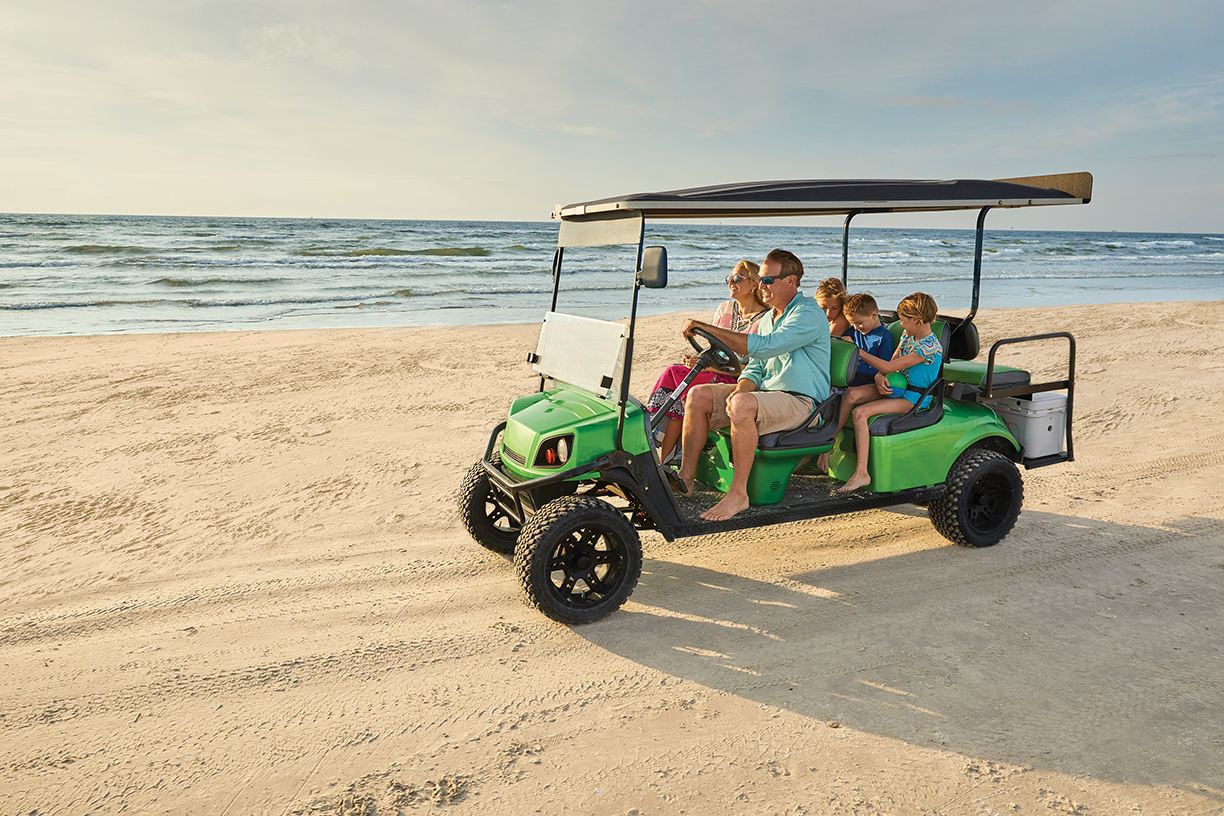
Communities such as Cinnamon Shore in Port Aransas, Texas, are embracing the idea that guests want a slower pace without sacrificing accessibility.
©istockphoto.com / IR_Stone

Car-free and golf cart centered communities are designed for those looking to reconnect with the outdoors and spend less time stuck in traffic.
©istockphoto.com / 300dpi
“Residents will have access to a variety of bookable spaces to allow them to expand and contract their home as needed.” A modern way of living has melded with the traditional idea of small-town communities. “Culdesac will have bookable guest suites, podcast studios, hosting spaces, and day-use office spaces to allow your home to adjust to your needs,” Sunder explains. “Why pay for a guest room 365 days a year, when you only use it a few times a month?”
Forever shifting to accommodate the residents’ needs, a car-free community like Culdesac is ideal for many people, even during these changing times amidst a pandemic. “The idea of life at your front door makes Culdesac Tempe a place that a variety of people with different needs are interested in — young professionals, students, families, remote workers, retirees, empty nesters, et cetera,” says Sunder. More spacious apartments and public workspace are functional for those residents who are working remotely, as they also don’t have to worry about commuting into an office every day. Since the pandemic, “we’ve seen increased interest from folks particularly from New York and San Francisco, and 50 percent of our waitlist are people coming from outside Arizona,” notes Sunder.
Golf has always been considered an elitist sport, but when precious metals and exotic leathers are introduced, it’s a whole new game.
With its expensive equipment and country club heritage, golf has always been considered a luxury pursuit, even though aggressive youth programs and some hip touring professionals have begun eroding the sport’s buttoned-down image. Nonetheless, players with unlimited resources or a penchant for fantasy are fueling demand for some over-the-top golf equipment and accessories.
The venerable luxury brand of Tiffany & Co. creates some of golf’s most coveted trophies, including those of the PGA Championship and Arnold Palmer Invitational. It also produces an elegant sterling silver putter ($2,500), which is an ideal gift for any golfing enthusiast who likes to flash some bling on the greens. A more discreet way to glamorously accessorize one’s game is with the company’s sterling silver tee, which at $175 is a relatively inexpensive way to give a loved one a little blue box from Tiffany. Hopefully, it will not be lost on the course!

The Garia “Golf Car”
Photo courtesy The Watch Judge

The most expensive regular-production golf clubs are the platinum-and-24-karat gold-accented Beres 5-Star series from Japanese manufacturer Honma. Veteran golf retailer Bill Stauff er of Las Vegas Golf & Tennis Superstore reports that a 14-club set with bag sells for about $65,000 and is popular with status-conscious Asian tourists who would pay more for these products back home. “There’s no question the quality is there,” states Stauffer, who insists Honma products are not simply for bragging rights. He explains the clubs are all made-to-order by seasoned craftsmen, which results in an eight-week wait for delivery. While the brand has traditionally been more popular with billionaire duff ers than PGA pros, superstar Justin Rose just inked a 10-year endorsement deal with Honma.
Transforming the clunky electric golf cart into a sophisticated driving machine is Garia, a Danish manufacturer whose top-of-the-line vehicle begins at $73,000. The Garia “Golf Car,” inspired by Mercedes-Benz, combines luxury, state-of-the-art technology and the true spirit of the game. For functionality, it features a scoreboard displayed on a touchscreen and handy tray for balls and tees, while comfort is ensured by the inclusion of that essential amenity on the golf course — a built-in refrigerator. And with an attainable speed of 43 miles per hour, albeit not recommended at stuffier country clubs, Garia has not overlooked performance. This aerodynamic Mercedes Benz-styled ride puts an end to the plastic buggy age and allows luxury golf enthusiasts to express themselves on the links.
Anders Lynge, designer and co-founder of Garia, explains the inspiration for the product was to take Mercedes-Benz design values onto the golf course, noting the iconic automotive brand has previously applied its sense of style to yachts and helicopters. All Garia golf cars are more than just your average golf cart,” insists Lynge, citing features like sports car-inspired double-wishbone suspension with disc brakes and an integrated instrument cluster. While it offers the functionality and simplicity of a golf cart, the designer maintains it drives more like an automobile.
“Buyers are wealthy individuals who need the car for golf and street usage inside their communities or on their properties,” says Lynge, who reports the car is street legal in both the EU and U.S. “Some are Mercedes collectors, some avid golfers who want the very best, others are athletes or entrepreneurs who have made it and now live in a golf community and want the best possible vehicle for driving and golfing,” says Lynge of his globally diverse clientele.
Par West Custom Golf Shoes is another brand that has gained traction among discriminating golfers. Paul Raddatz founded the business after making his first pair of shoes for PGA pro Payne Stewart — the game’s most flamboyant dresser in the ’80s and ’90s — from NFL football leather.
Currently, three of the top 10 ranked players on the Tour are wearing Par West shoes. The Wisconsin-based company custom-makes all shoes from a foot mold kit, taking into consideration clients’ sock preferences and habits on the course.
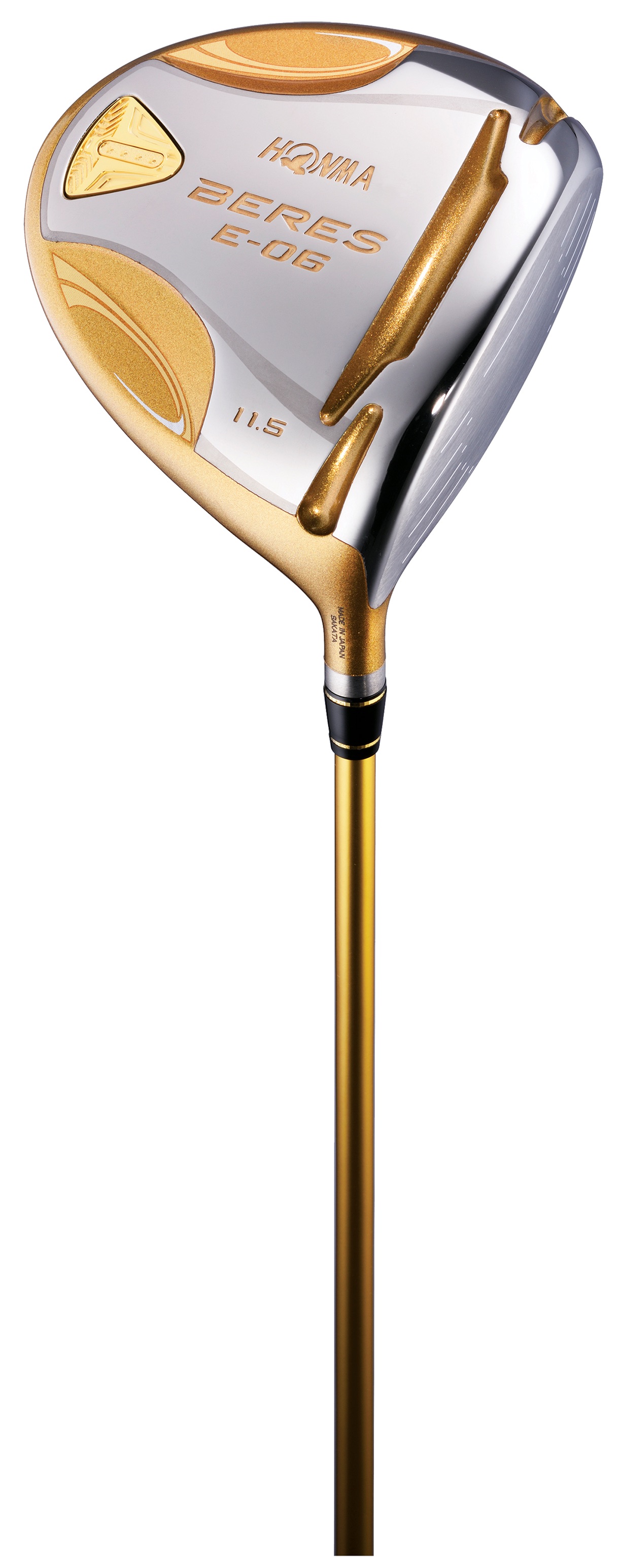
Honma Beres S-06 Driver
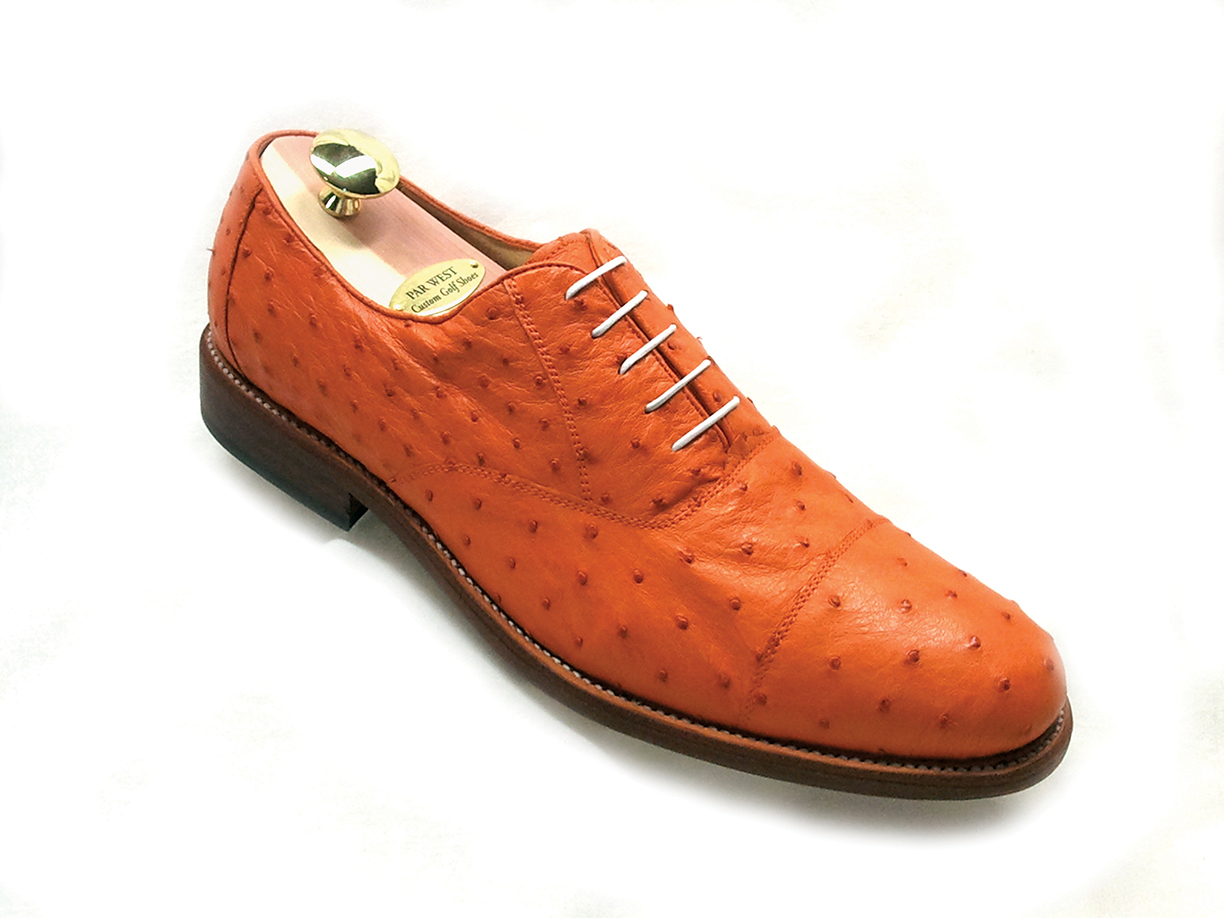
Sterling in Tangerine Ostrich
Reporting he has sold shoes with more than 5,000 distinct color and style combinations, Raddatz says many of his customers are simply unable to find shoes that fit in any pro shop. “Others are people who really want to look their best and care about quality,” he explains. Traditional styles are offered for conservative dressers, but for those more daring in their golf fashion, perhaps influenced by the PGA’s Rickie Fowler, Par West has plenty of eye-popping options to choose from.
Raddatz, a leather industry veteran, utilizes sharkskin, ostrich, American bison, crocodile, African elephant, and stingray for golf shoes, among other exotic leathers. He reports bold color choices like fuchsia, canary yellow or tangerine are surprisingly popular, and a pair of royal purple American alligator shoes is priced at $5,200. An avid golfer himself, Raddatz states, “I don’t care how much you spend on clubs or lessons. Stability on the ground is the basis for a good swing.” A large part of Par West’s business is corporate gifts, ideal for the Fortune 500 executive who fancies himself as the best dressed golfer at his club.
Some fashionable duffers may opt for a vintage Louis Vuitton golf bag, but among the most expensive currently available are ostrich, crocodile or carbon fiber bags from Barchi, handcrafted by Italian artisans. Customers should be prepared to spend more than $40,000 for these luxury bags, available in vibrant colors and accented with palladium hardware.
Considerably more modest but with plenty of cachet is Louis Vuitton’s golf kit clad in the design house’s signature Monogram canvas. The $850 item, which can be clipped to one’s golf bag or Garia cart, neatly holds three balls and four tees. Players with fancy accessories should probably consider membership at a country club that is equally selective, and the most expensive in America is Liberty National Golf Club in New Jersey, where the initiation fee is reportedly $500,000.
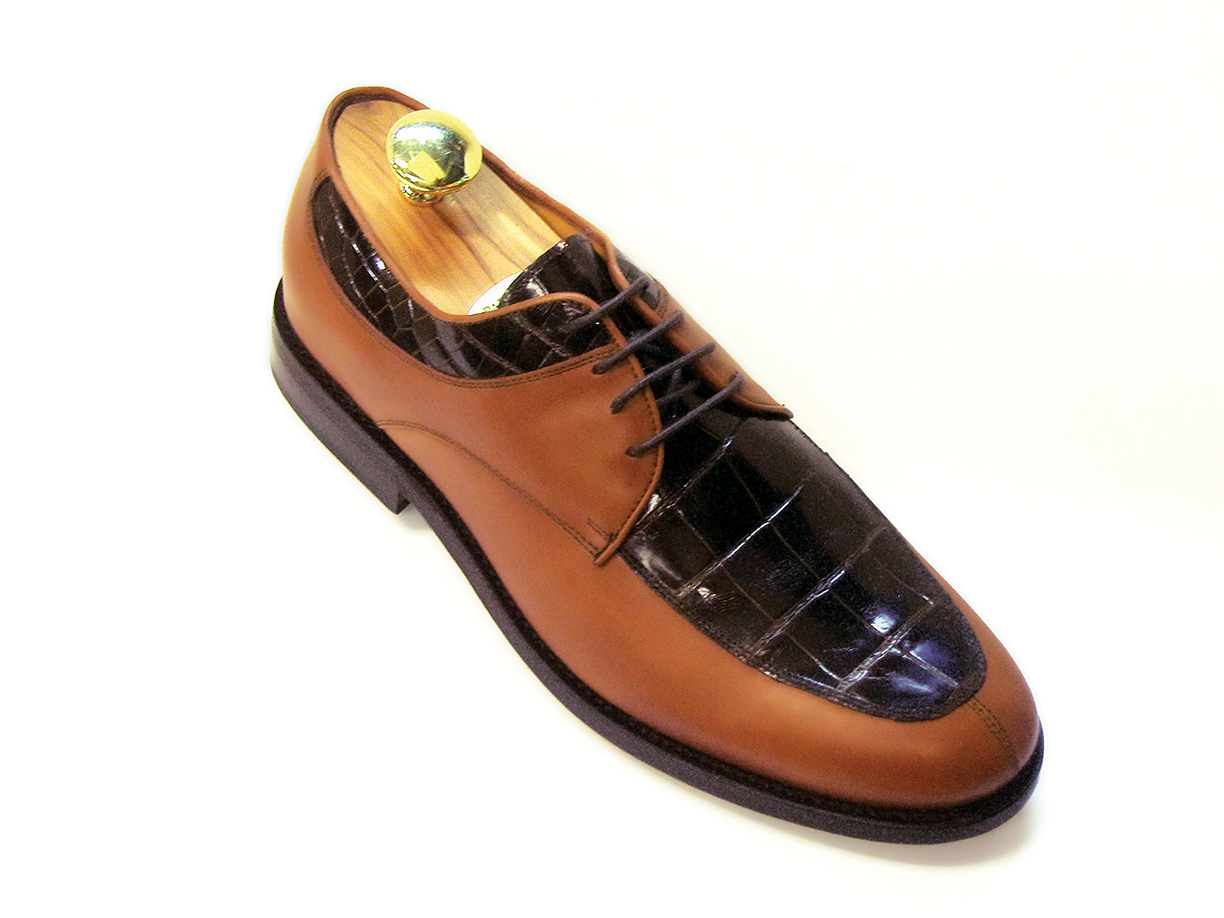
Riviera in Cognac Calf & Chocolate American Alligator














